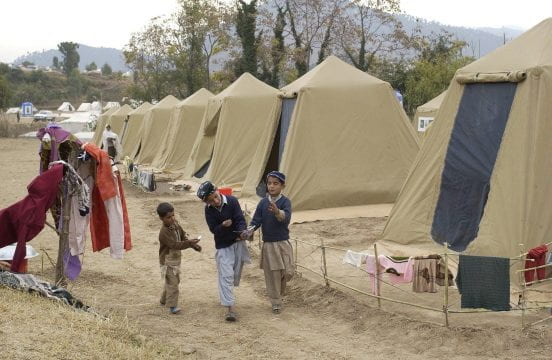Hi everyone!
In my previous post, one of the human-driven consequences of war I touched on was the impediment of animal migration, driven by the erection of borders. However, could migration itself, as an aftereffect of war, imperil the environment? Today, I will be delving into the relationship between forced displacement and the environment in 3 spheres: environment as an impact, as a cause, and as an exacerbant.
Let’s start by understanding what forced displacement is, and its relevance to war.
79.5 million people uprooted due to conflict, half of which are children…these statistics are absolutely horrifying, not mentioning the heart-breaking implications that follow, such as rape.
We’ve just had a glimpse into the social issues of forced displacement, but how does the environment factor into play?
Environment as an Impact of Forced Displacement
The most widely recognised relationship between forced displacement and the environment is that forced displacement directly degrades the environment, as illustrated in the infographic below:
Interactive Infographic
Although I was not able to find explicit data on this, I believe that forced displacement can also peril the environment indirectly, by diverting government capital and attention from conservation. This hypothesis can be justified by the Eisenhower Decision Matrix, a tool for prioritisation that governments may inadvertently use in strategising.

For example, although conservation may be regarded as a prime concern, the influx of refugees into a host country would trump it in terms of urgency, and hence take precedence as a Quadrant 1 priority. As such, host nations would have to devote manpower and funds to address the social implications and slew of environmental repercussions immediately, neglecting conservation until the crisis has stabilised – which may take decades.
Environment as a Cause of Forced Displacement
Since 1960, 40% of civil wars were impelled by resource scarcity. A key example highlighting the association between resource scarcity, conflict and forced displacement is the Rwandan Genocide, which was partially instigated by contest over limited land between the Tutsis and Hutus. The conflict subsequently resulted in the uprooting of 2 million Hutus.
Ironically, another driver of war and forced migration is environmental degradation. Overexploitation of fragile biomes can disrupt key ecosystem processes and cause man-made hazards and resource scarcity, thus inciting political and social strife. For instance, the root causes of the Syrian Civil War were cited to be ‘over-grazing and desertification’, consequently triggering the mass displacement of 6.2 million.
Environment as an Exacerbant of the Impact of Forced Displacement.
Finally, climate change can exacerbate the already perilous impacts of forced displacement. As refugees often seek asylum in developing nations vulnerable to the symptoms of climate change, extreme weather events and natural hazards can further jeopardise them and their host countries. This is evident in Mozambique, Zimbabwe and Malawi, where refugees suffered the impacts of Tropical Cyclone Indai, and Bangladesh, where Rohingya refugees had to endure monsoon storms, flooding and landslides.
In view of the unparalleled rate of climate change humanity is barrelling towards, we must also note that if anthropogenic drivers are not curtailed soon, climate change might become a cause of forced displacement itself. Perturbingly, this phenomenon is in the perceivable future, and might already be manifesting its impacts…
With this, I have finished my exploration on the human-driven environmental impacts of war. Stay tuned as I share more about myself, before concluding this blog!




